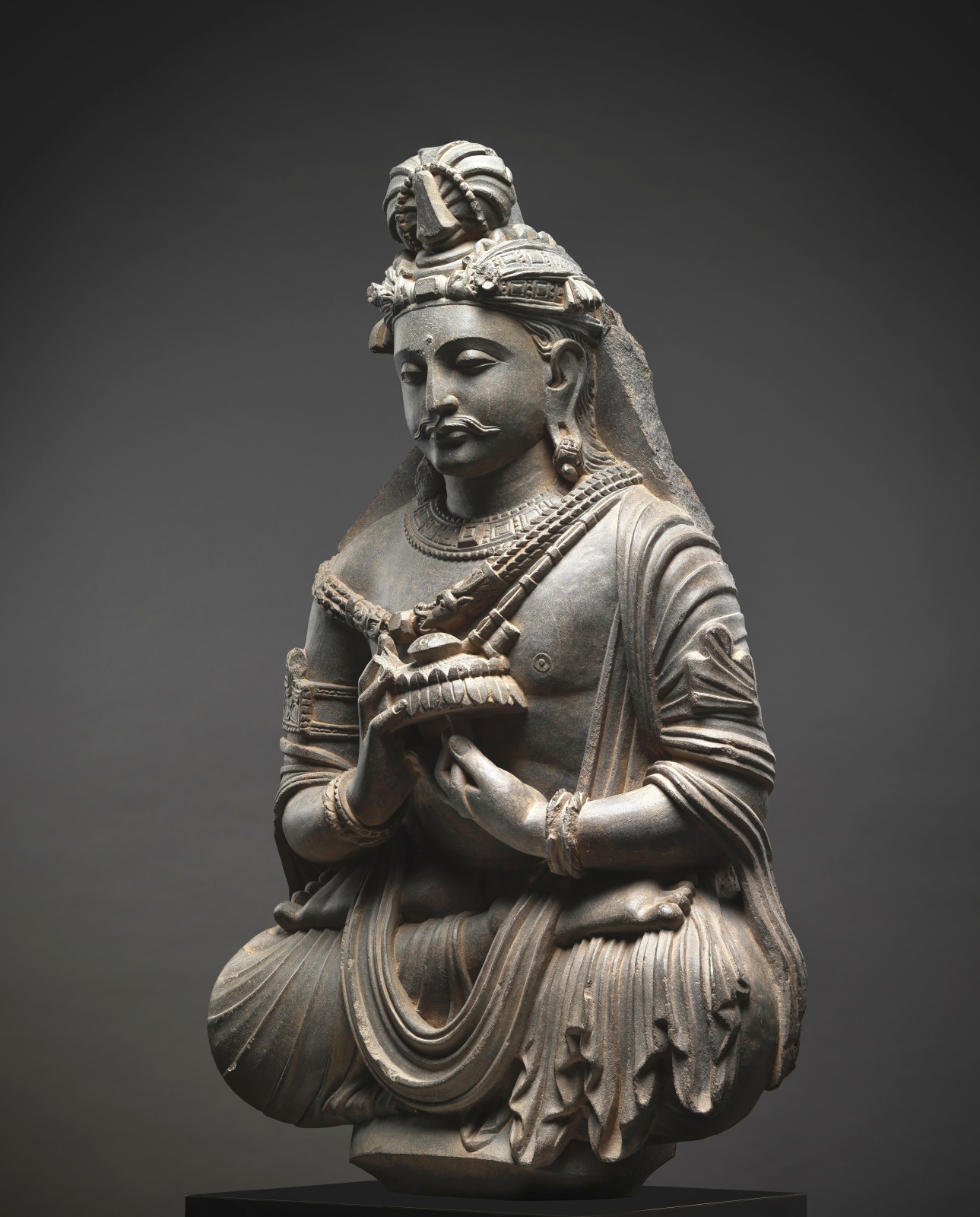
Provenance:
Marcel Nies Oriental Art, TEFAF Maastricht, 2007
English Private Collection
Published:
Marcel Nies Oriental Art, The Sacred Breath, Antwerp, 2005, pp. 10-11
Atlas, World Cultures in Dialogue, Munich, HVB Kunst Palais exhibition catalogue, October 6-12, 2005
The bodhisattva of compassion is seated in vajrasana on a small, oval seat. His hands are raised in dharmacakramudra, the gesture of preaching and turning the Wheel of the Buddhist law, while the left hand grasps the stem of a lotus flower held to his chest.
The bodhisattva wears a classically-draped garment and sash, earrings, a crescent-shaped collar with square-cut stones, bracelets, and a beaded necklace ornamented with a pair of makaras confronting a faceted jewel. Padmapani also wears several charm boxes attached to a string that goes around his body diagonally. His face exudes a benevolent expression, with bow-shaped mouth, incised moustache, downcast almond-shaped eyes, and fragmentary circular urna in relief on his forehead. His elaborate turban is decorated with makaras, faceted jewels, rosettes, and pleated fabric.
The Gandhara Empire emerged as a crucial center of trade and cultural exchange along the Silk Road, connecting the civilizations of East and West. Its strategic location facilitated the exchange of ideas, languages, and goods between different cultures, resulting in a dynamic fusion of artistic, architectural, and religious influences.
The art of Gandhara is particularly notable for its unique blend of Hellenistic and Buddhist styles. The sculptures and reliefs from this period often feature Buddha and Buddhist deities portrayed with distinct Greco-Roman facial features and realistic drapery, reflecting the cross-cultural interactions that characterized the region. Gandhara's importance as a Buddhist center cannot be overstated. The region was home to many monastic complexes, stupas, and rock-cut caves adorned with exquisite carvings and sculptures. These artistic representations not only served a decorative purpose but also played a significant role in conveying Buddhist teachings to the local population and pilgrims traveling through the region.

